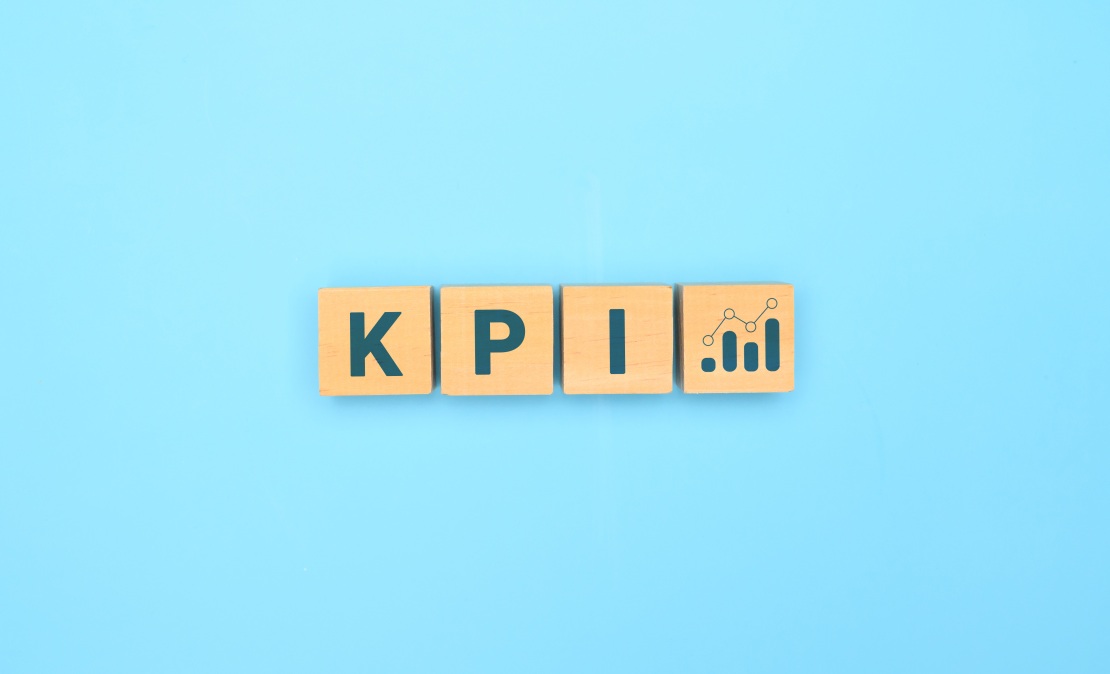Success is often measured by a company’s ability to innovate, adapt, and perform effectively and efficiently. With digital technology making access to information easy and consumer behavior changing, performance metrics have become critical to an organization’s success.
Alongside traditional key performance indicators (KPIs), businesses use digital metrics from social media and search engines to evaluate the competitive market and drive growth. This dual approach to analyzing performance data has become a powerful strategy for companies optimizing their business operations to achieve lasting success.
Understanding Performance Metrics as a Business Strategy
Performance metrics provide valuable insight into various company operations, including:
- Customer satisfaction
- Financial health
- Market penetration
- Operational efficiency
Key performance indicators (KPIs) measure a business’s long-term health and performance. They can help specify a company’s operational, financial, and strategic progress. KPIs help a business rank its progress and success against other companies within the same industry. There are three types of traditional KPIs:
- Functional KPIs focus on particular business functions, such as financials, accounting, and marketing measures. They provide critical information to strategic or operational users.
- Strategic KPIs offer vital metrics regarding a company’s health. CEOs typically use this type of KPI to determine the return on investment (ROI), company revenue, and profit margins.
- Operational KPIs focus on determining the monthly, weekly, or daily metrics of a business’s progress. Management uses this metric to determine where a company shows strengths and weaknesses, determine what causes revenue declines, and adapt strategies to address the problem.
Other KPI measures, such as customer acquisition costs and retention rates, present a complete picture of a business’s performance in these areas.
For example, monitoring revenue and profit margins enables companies to evaluate their strength and profitability. By analyzing customer acquisition costs, conversion rates, and retention rates, businesses can gauge the efficiency of their marketing and sales endeavors and their capability to retain customers over time. KPIs, including traditional business metrics, are critical for assessing performance and guiding data-informed decisions.
Essential Traditional Performance Metrics
Traditional KPIs help a business determine where it is succeeding and falling short. Regardless of your company’s sector, there are some universal ways to assess progress and performance in any business, including:
Revenue Growth
KPIs offer valuable information about a company’s revenue growth over a specific timeframe. Companies may measure this metric monthly, quarterly, or yearly, depending on the industry. This KPI is critical to business success as it measures the results of company changes like adding new business models or scaling up operations.
Inventory Turnover
Companies with high inventory turnover are moving and selling products effectively and efficiently. This KPI determines whether products move through the supply chain rather than sitting on trucks or warehouses; the higher the inventory turnover, the greater the revenue. Inventory turnover KPIs are the leading indicator of whether a business’s process changes are successful.
Customer Acquisition Cost
Customer acquisition cost is the money a business spends to obtain a new customer. This KPI metric is determined by the sales, marketing, and advertisement costs spent over a defined period. That sum is then divided by the number of new customers within that period.
Customer acquisition costs differ in each industry. For example, an e-commerce company may acquire hundreds of new customers monthly, while a business-to-business (B2B) company only acquires two or three a year.
Want to unlock business success with the dual power of performance metrics?
Contact Growth Hackers
Social Media Metrics: A Paradigm Shift in Business Evaluation
Social media has transformed how businesses engage with their audience and promote services and products. Platforms like Facebook, Instagram, X (formerly Twitter), LinkedIn, and TikTok have become avenues for branding, customer interaction, and market analysis. As such, social media metrics have become a practice for companies striving to remain competitive in modern business.
These KPIs determine the efficiency of a company’s social media channels, allowing a business to make data-informed decisions and measure progress toward specific goals.
Some essential social media KPIs include:
- Audience demographics provide insights into consumer gender, age, and location. This information is essential as it informs a business whether the social content aligns with the audience’s preferences and interests.
- Audience growth determines the number of new subscribers or followers gained over a specific period. Follower count growth is an easy way to evaluate the effectiveness of a business’s content, and it helps companies understand audience needs and spot changing trends.
- Reach refers to the number of unique visitors who saw your company’s social media content. Reach is a critical KPI because it measures the success of a business’s goals, such as brand awareness and visibility.
- Post shares display the success of a company’s marketing strategies. The more the audience shares your business content, the more that proves the relevance and value of that information. When a viewer shares your company’s post, it is shared with their whole network, amplifying the boost and reach of the brand’s visibility. This KPI lets companies know when their social media content is successful.
- Impressions are the number of times a company’s content appears on a social media platform’s feed. You can easily calculate it with a cost per impression calculator. This KPI accurately measures how often the content is viewed. Higher impressions equal content that is widely circulated on that platform.
- Non-branded traffic measurement is a key indicator of a social media channel’s improvement and success. Non-branded traffic comprises internet users searching for SEO keywords that align with a company’s services or products.
- Google Business Profile (GBP) optimization lets companies use social media KPIs to create effective online directory business listings. This action increases a company’s visibility by enhancing its online presence and improving ROIs.
These metrics offer crucial insight into the efficacy of social media campaigns, audience demographics, content strategies, and brand perception. Analyzing social media data comprehensively allows businesses to identify trends, understand consumer preferences, and tailor marketing efforts to boost audience levels and return on investment (ROI).
Key SEO and Performance Metrics for B2B Companies
According to BrightEdge Research, roughly 53% of internet traffic comes from organic searches, making search engine optimization (SEO) and performance metrics essential to the success of B2B companies.
For example, SEO benchmarks using B2B-specific KPI metrics go beyond the traditional conversion rates and traffic growth factors. Instead, the focus is on retaining and attracting new customers, usually through improving search engine rankings. Important SEO KPIs include average session durations, monthly recurring revenue, and click-through rates. These performance metrics are more defined and provide a better analysis of keyword success and the data-driven needs of the company’s business base.
Search volume is a key metric in SEO. This allows a company to determine how often consumers use a specific phrase or keyword to find information on a product, service, or subject. Companies can use search volume metrics to make data-informed decisions on SEO keyword selection as well as trend and competitor analysis.
Having vital data on search volume metrics can also guide a business’s digital content strategy. This can also help you determine how to best combine your organic and paid search strategies for maximum benefit and reach.
Driving Business Success with Traditional and Social Media Metrics
While traditional KPIs shed light on business operations, social media metrics delve deeper into consumer behavior and market patterns. By combining these two sets of metrics, companies can adopt a successful approach to analyzing performance and refining strategies.
One of the benefits of using both social media metrics and traditional KPIs is the ability to monitor and analyze the entire customer journey. Traditional metrics like revenue and customer acquisition costs provide insights into the phases of the customer lifecycle, including lead generation and conversion. Social media metrics clearly show the impact of brand awareness, engagement, and advocacy in the customer sales journey.
Additionally, integrating traditional and social media metrics allows businesses to discover connections and causations between performance indicators. For instance, a company might observe increased website traffic following a social media campaign, which may increase sales and revenue. Analyzing these relationships allows businesses to fine-tune their marketing strategies to enhance outcomes and reduce risks.
Harness the power of performance metrics for dual business success!
Implementing a Dual Approach to Performance Analysis
Businesses should use a performance analysis approach to effectively utilize digital metrics and traditional KPIs. Here are some best practices for implementing a dual approach to engender success in performance analysis:
Establish Clear Goals
Businesses should strive to clearly outline objectives and key performance indicators that align with their goals. Whether your business aims to boost profits, enhance customer satisfaction, or raise brand awareness, linking metrics to results is essential.
Choosing the Right Metrics
Opt for metrics that align with your business model, industry, and audience. Consider both measures, such as revenue and conversion rates, and qualitative indicators, like brand perceptions and customer feedback, to get a complete view of your company’s performance.
Using Analytical Tools
Your business should invest in tools that enable you to monitor and analyze social media and SEO metrics in real time. Platforms like Google Analytics, Hootsuite, and Facebook Insights provide robust analytics features for tracking performance across multiple channels.
Tracking Patterns and Trends
Keep a close eye on performance trends and patterns to identify opportunities for increased performance and potential challenges. Find connections between social media, SEO, and traditional metrics and adjust the strategies to maximize results.
Leveraging Dual Metrics for Success
Let’s explore a scenario to demonstrate the benefits of analyzing performance with dual metrics:
A small e-commerce startup called Company ABC is looking to boost its online sales and enhance its brand presence. By examining KPIs on revenue, conversion rates, and customer acquisition costs alongside social media metrics such as engagement rates, reach, and follower growth, Company ABC creates a detailed strategy for evaluating its performance.
Company ABC uncovers opportunities to enhance its marketing strategies by carefully analyzing social media metrics. By adjusting its social media content to better connect with its desired audience. Company ABC uses user-generated content to boost levels and run advertising campaigns based on performance data. As a result, the business sees substantial increases in online sales and brand recognition.
Company ABC effectively meets its business goals by combining insights from traditional KPIs and social media metrics. This integration leads to beneficial outcomes and sustainable achievements.
Harnessing the Power of Dual Metrics for Business Success
Adopting an approach to gauging success gives businesses a sturdy framework for refining marketing strategies and fostering business development. Companies can gather critical insights into their marketing strategies’ impact, trends, and consumer behaviors by combining tried-and-true performance indicators with social media platform metrics.
Businesses can capitalize on the connections between traditional metrics and social media data to achieve concrete results and lasting success in an increasingly competitive business environment.
Growth Hackers is an award-winning data analytics services agency helping businesses from all over the world grow. There is no fluff with Growth Hackers. We help entrepreneurs and business owners master the dual path to success with insightful performance metrics, increase their productivity, generate qualified leads, optimize their conversion rate, gather and analyze data analytics, acquire and retain users and increase sales. We go further than brand awareness and exposure. We make sure that the strategies we implement move the needle so your business grow, strive and succeed. If you too want your business to reach new heights, contact Growth Hackers today so we can discuss about your brand and create a custom growth plan for you. You’re just one click away to skyrocket your business.








